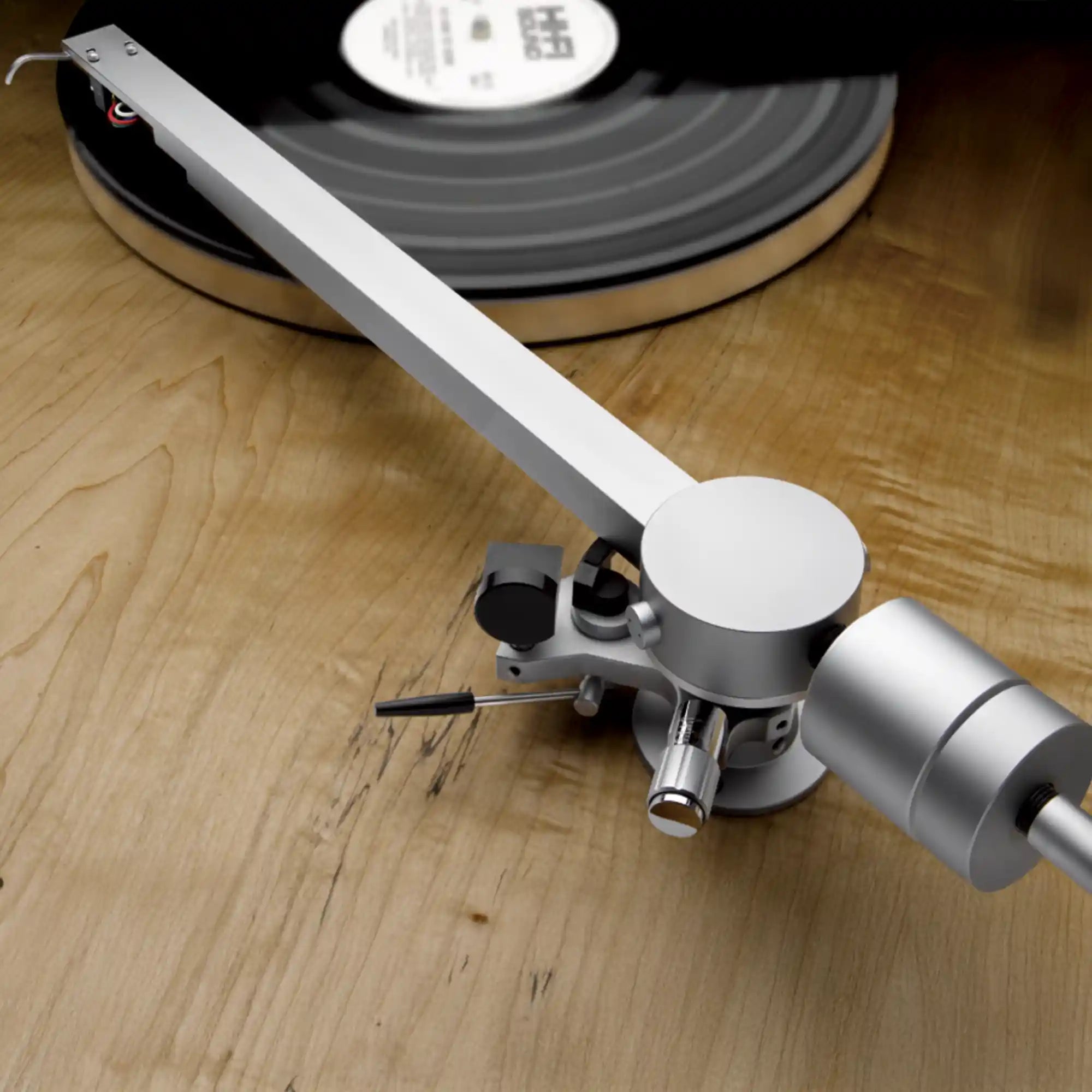
Sorane ZA-12 Tonearm
The Sorane ZA-12 Transcription Arm takes the strengths of the Sorane SA1.2 tonearm (already recognized as a Class A component) and marries these strengths into a purist ‘no compromise’ high-performance tonearm.
Sorane ZA-12 Tonearm
No compromise meant giving up detachable headshells and lengthening the arm for lower tracking error. While the ZA-12 is 3″ longer than the SA1.2, the total mass of the ZA-12 is lower, guaranteeing that the new arm will be compatible with a broader range of high-quality cartridges. And if you want more mass for very low compliance cartridges, you can easily add it.
Sorane ZA-12 Key Features:
- Lower mass than the SA-1.2
- Detachable RCA phono cable
- Optional XLR phono cable available
Sorane Tonearm Range Shared Features:
CNC, Machine-tooled and hand-assembled by skilled Japanese craftsmen. This highly skilled and delicate hand-assembly differentiates Sorane tonearms from mass produced Japanese tonearms. With standard quality goals, high-volume production tonearms are manufactured by die-casting and semi-automatic assembly line processes, to keep production costs low. Concerning the reproduced sound from these models: The the designer is confident you will get a precise and clean sound, which can only be had from hand-made tonearms, but at a very reasonable price.
In particular, the SA-1.2 and ZA-12 will produce rich and tight bass, coming from the extremely rigid rectangular shaped armwand. Skilled hand assembly does not simply mean “combining the constituent parts by hand”. Skilled hand assembly involves measurement, adjustment and hand-fitting to produce an optimal interface between machined surfaces. Once completed, the fitment
between every part is ideal, satisfying the necessary conditions for chatter-free reproduction of analog sound. Most importantly, the key to tonearm quality is highly sensitive and delicate motion, for which the bearings are the determining factor.
Gimbal-bearing designs for excellent bass, dynamic sound and imaging, as well as unconditional azimuth stability (Which is the biggest problem for conventional uni-pivots bearing).
For SA-1.2, SA-1.2B, SA-1.2BCS, (As attached photo) two sets of fine radial bearings are installed for both horizontal (set in the bearing stem column) and vertical (further small bearing at tonearm wand) suspension. This assures audiophiles of smooth tonearm function, greater longevity, better consistency, and enhanced ability to track warped vinyl.
(In SA-1.2BCS,negative-balance selection is to follow more precisely to warped vinyl) (More versatile bearing of “Double Bearing Pivot suspension” is applied to ZA-12, as mentioned after.)
For TA-1 and TA-1L, the same type radial bearing, used in the SA-1.2 for horizontal motion is used, while a delicate pivot bearing is employed for vertical movement (this is still a bearing, but the bearing axis end is cone-shaped and requires careful assembly and adjustment). The right side cone in this photo is inserted into
the miniature bearing inner race.
For the SA1.2 and ZA-12, lead wires run through separate aluminium tubes inside the arm, maximizing stereo separation.
For the ZA-12, the tonearm collet is removed. The effective length and geometry gives very low tracking error. The stylus tip of the cartridge is maintained as close to the centerline of the tonearm as possible. The mass distribution is kept as close to neutral as possible.
Pairs well with
If you have any questions, you are always welcome to contact us. We'll get back to you as soon as possible, within 24 hours on weekdays.
-
Shipping Information
Use this text to answer questions in as much detail as possible for your customers.
-
Customer Support
Use this text to answer questions in as much detail as possible for your customers.
-
FAQ’s
Use this text to answer questions in as much detail as possible for your customers.
-
Contact Us
Use this text to answer questions in as much detail as possible for your customers.

